[orc]As per the recently released Census 2011 data on migration, close to 45 crore people currently do not live in their place of birth. About 5.6 crore people currently do not live in their state of birth.
In our story on migration in India for educational reasons, we looked at the statistics related to migrants in India who moved seeking better education opportunities. In this story, we take a look at the numbers relating to those who were born outside their current place of residence, (with focus on inter-state migration) and attempt to identify some factors that drive this movement.
12.6% of the total migrants in India born outside their current State of residence
According to the 2011 Census data on migration in the country, it is observed that, in India, out of the total population of more than 120 crores, close to 45 crore people were found to be born outside the place of enumeration or in other words, 45 crore people did not belong to their current place of residence by birth.
Out of the 45 crore people who were born outside their current state of residence, it is observed that 59.1% (26.4 crores) of them had moved within the district after birth and about 27.1% (12.1 crores) moved within the state but to a different district other than the district of birth. Further, 12.6% (5.6 crores) of them were born in other states than their current place of residence. The remaining about 53.63 lakh people, who constitute 1.2% of the total migrants by place of birth, are those living in India but born outside the country.
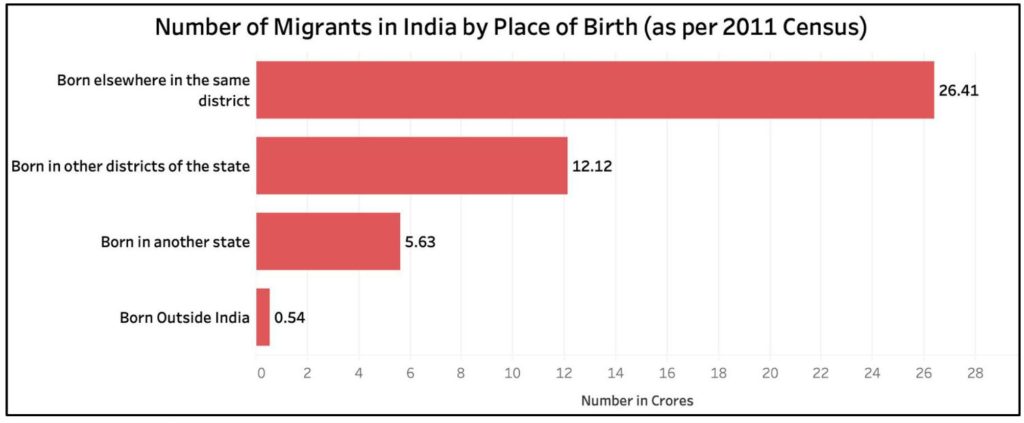
Uttar Pradesh has the largest number of out-migrants followed by Bihar
Out-migrants are those who moved from one place to another within a country. For the purpose of this story, we define out-migrants as those who were born in one state but moved to a different state after birth.
In terms of the above definition, the largest number of out-migrants, as per the 2011 census were from Uttar Pradesh. Out of the 5.6 crore people who currently live in a different state than their state of birth, nearly 1.3 crore were born in Uttar Pradesh. Following UP is Bihar where 79.5 lakh out-migrants were born. The two states together comprise almost 38% of the total number of people who currently live in a different state than their state of birth. This number from UP & Bihar corroborates the popular belief that a large number of people from these two states migrate to other states in search of work & livelihood. Further, close to 80% of the migrants from these states currently live in urban areas, and most probably in large metros.
Out of the 5.6 crore out-migrants, North Indian states of Uttar Pradesh, Uttarakhand, Punjab, Haryana, Delhi, Himachal Pradesh and Jammu and Kashmir, account for 36.4%. The out-migration from North Eastern states is very low. The migrants from Nagaland, Tripura, Meghalaya, Mizoram, Sikkim, Manipur and Arunachal Pradesh together constitute only 0.7% of the All-India figure, largely because of the very low population in these states. Assam alone accounts for 1.2% of the total national figure. The Eastern states of West Bengal, Odisha, Bihar and Jharkhand account for 24.4% of this figure while the Southern states of Kerala, Karnataka, Tamil Nadu and Andhra Pradesh (including Telangana) account for only 15.3%. On the other hand, Western states of Maharashtra, Rajasthan and Gujarat account for 15.3% somewhat similar to the South. The Central part of India comprising of Madhya Pradesh and Chhattisgarh account for 6.8% out-migrants.
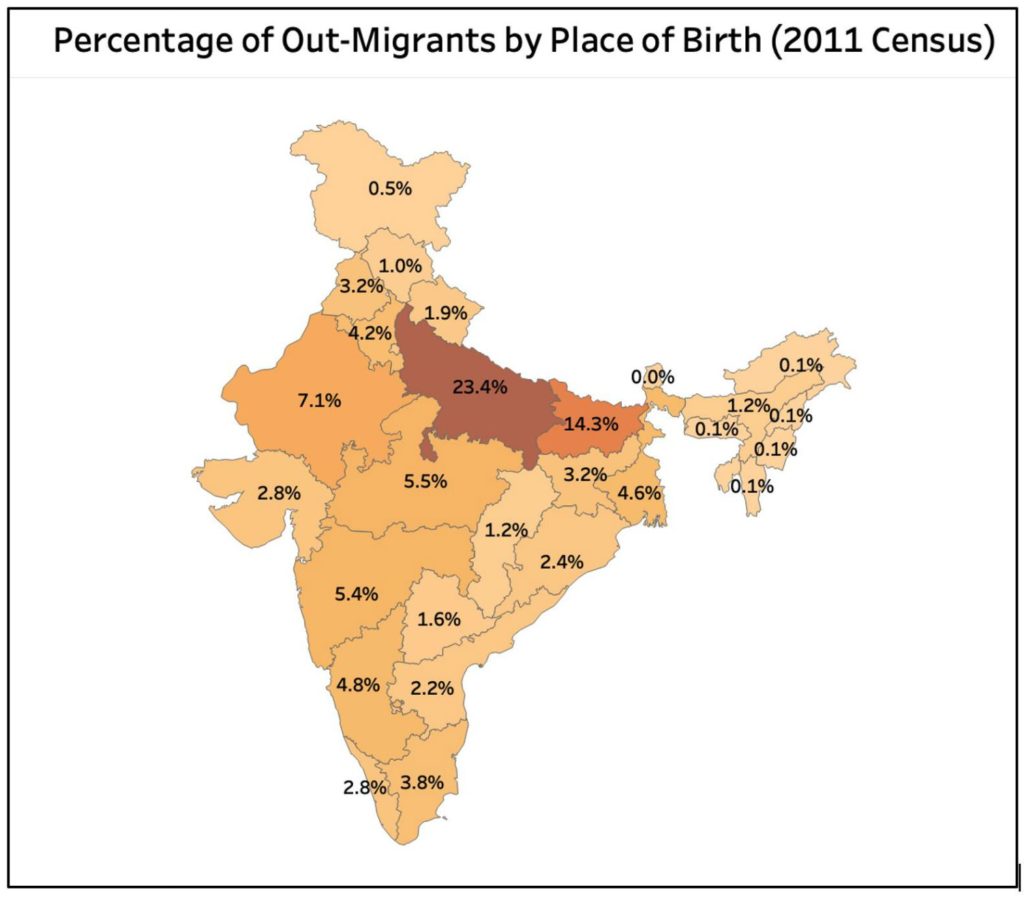
The number of interstate migrants has reduced to 12.6% from 13.8%
The census data of the last three decades reveals that the percentage of interstate migration by birth increased from 3.28% in 1991 to 13.8% in 2001 and then reduced to 12.6% in 2011. In each of these census years of 1991, 2001 and 2011, a total of 2.72 crores, 4.23 crores and 5.63 crores were inter-state migrants by birth respectively.
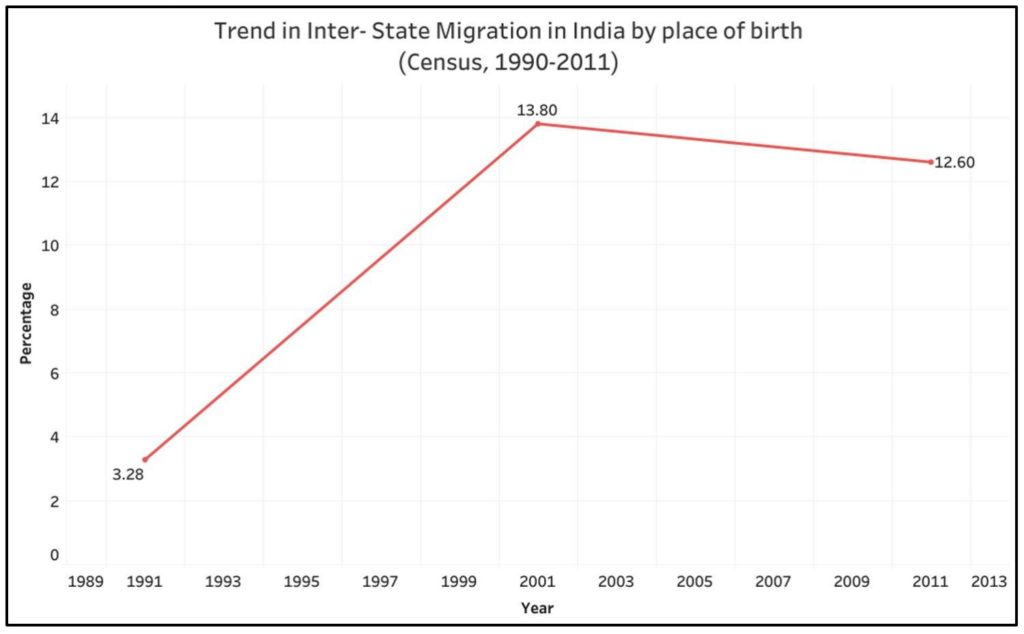
About 55% of the inter-state migrants by birth are female
It is also interesting to note that among inter-state migrants by birth, 71.5% currently live in urban areas while the remaining 28.5% in rural areas, as per the 2011 census. Over the last three decades, one can also notice that in 1991, the scenario was entirely different. As per the 1991 census, 62.6% of the inter-state migrants lived in rural areas. This declined to 33.1% in 2001 and further down to 28.5% in the recently released census migration table of 2011. Settling in rural areas is more preferred by those moving within the state.
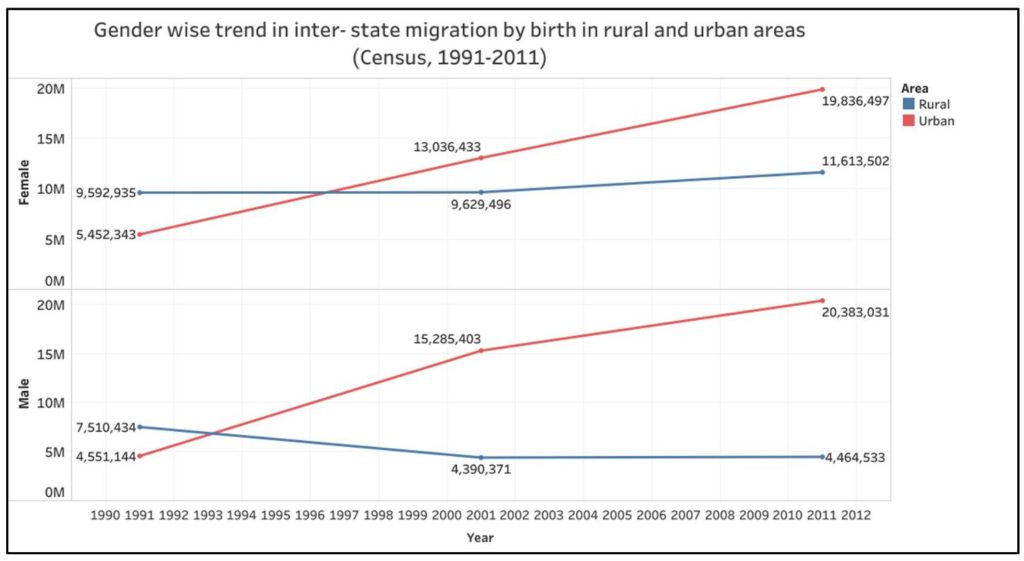
The proportion of male and female migrants by birth has been more or less consistent throughout these years. The total number of females has always been higher than their male counterparts. The percentage of females was 55.5% in 1991, 53.5% in 2001 and 55.8% in 2011.
Data suggests that more migration takes place in the working age
Based on the age group of the population, the following chart shows the distribution of the inter-state migrants in India.
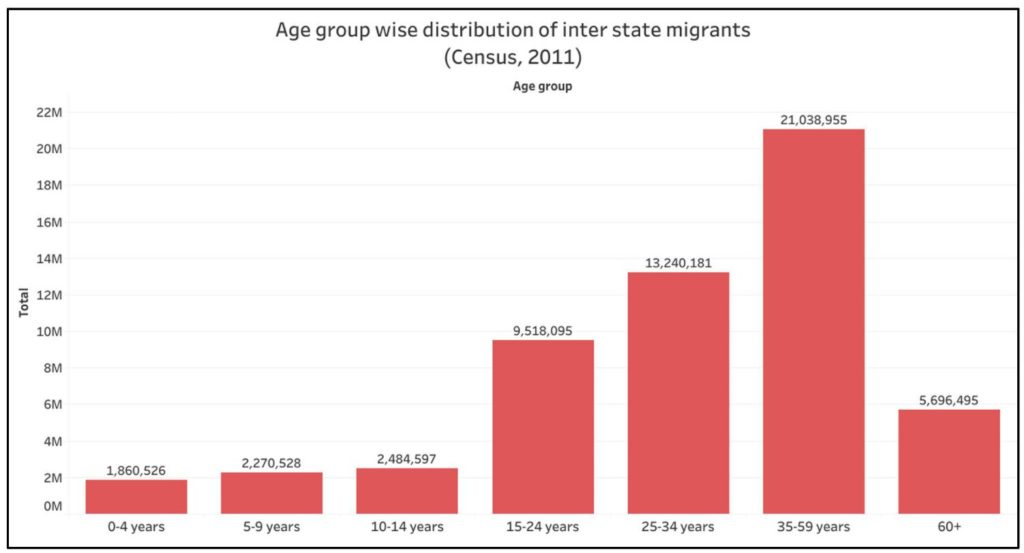
Those in the age group of 35-59 years constitute 37.3% of the total interstate migrants. This can be attributed to the large age group range 25 years. Those in the age bracket of 25 to 34 years comprise 23.5%. Together, those in 25-59 age group constitute 61% of the inter-state migrants indicating that more migration takes place during the working age.
Socio- economic inequalities in various parts coupled with livelihood opportunities are the prime drivers of migration are across the country. While some parts of the country are plagued by under-development and poverty, economic growth and urbanisation are concentrated in & around a few cities offering greater opportunities of livelihood. These urban centers attract a large number of people from rest of the country.
Featured Image: Out-migrants in India


